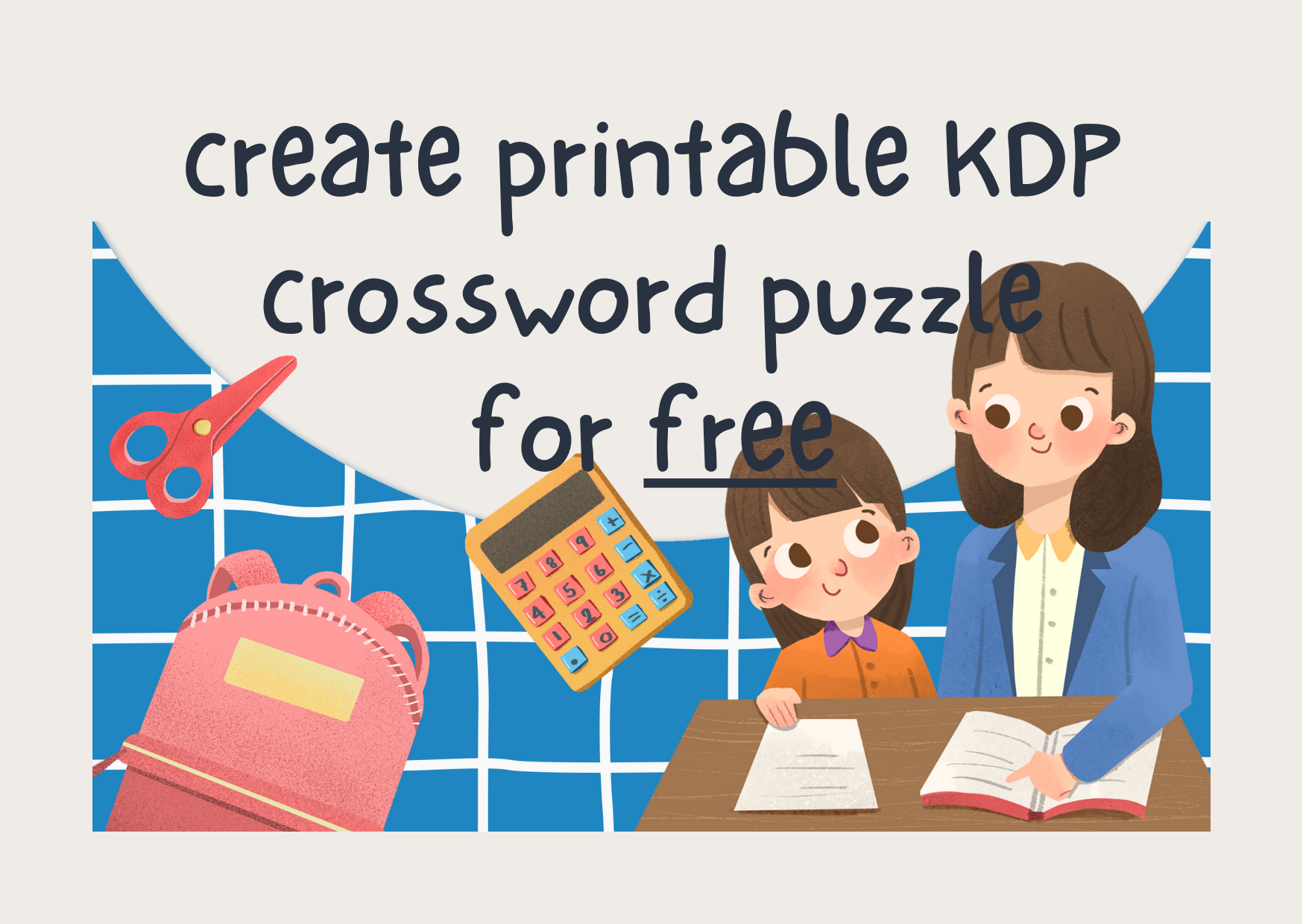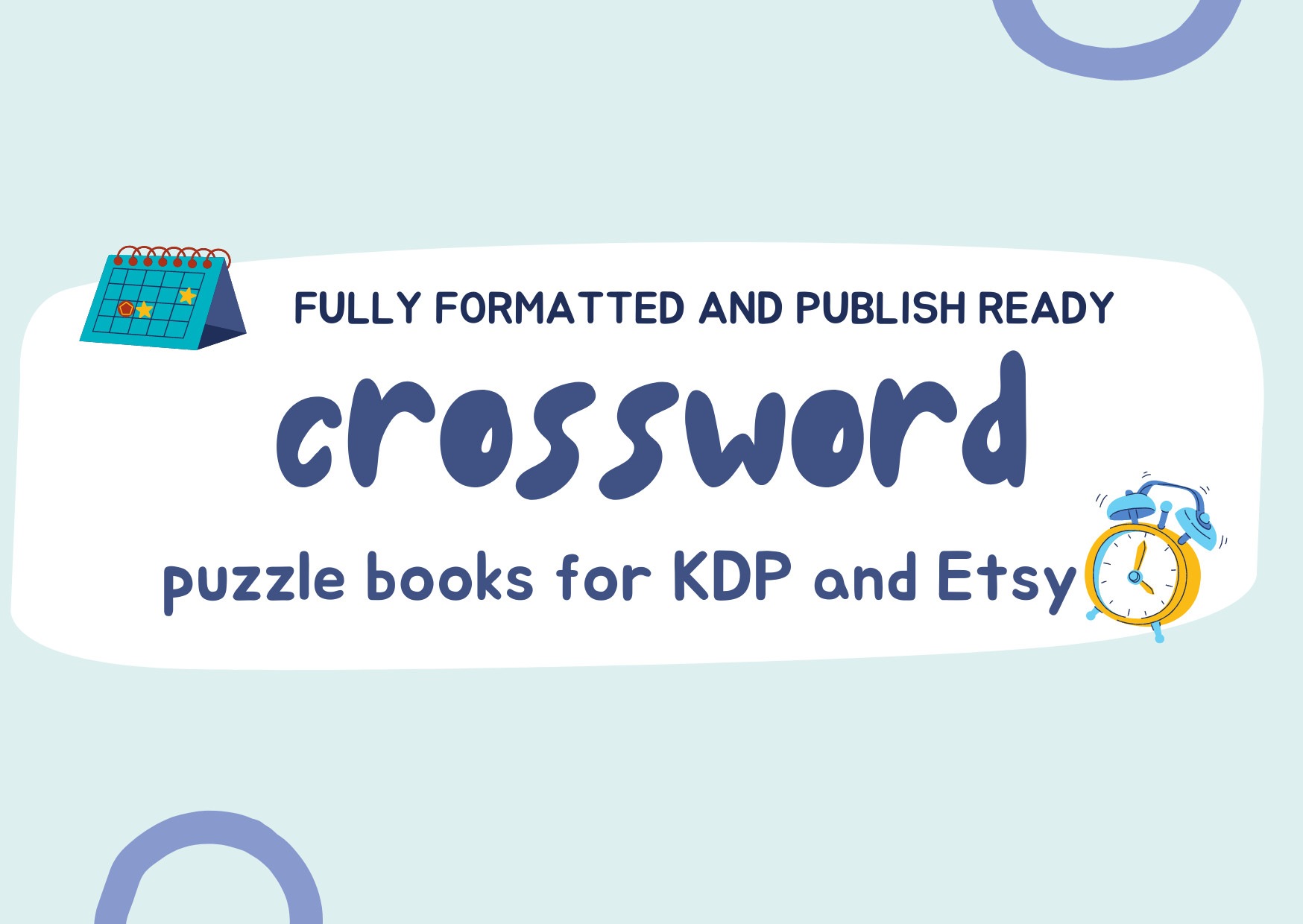Crossword puzzles: details on how to solve, play, tips and tricks, advanced player strategies and how to profit from KDP puzzle books
This is a how to article by Saffron
table of contents
- how to solve crossword puzzles
- detailed explanation of the rules of crossword puzzles
- tips and tricks on how to quickly solve crossword puzzles
- advanced strategies for solving crossword puzzles
- how to make money with crossword puzzle books

How to solve crossword puzzles
Solving crossword puzzles can be an enjoyable yet challenging activity. Here's a guide on how to approach and solve crossword puzzles effectively:
1. Start with Easy Puzzles:
If you're new to crossword puzzles, begin with easier ones to build confidence and familiarize yourself with common clues and patterns.
2. Read the Clues:
Thoroughly read all the clues. Pay attention to both the across and down clues.
3. Scan for Easy Answers:
Look for clues with straightforward answers or those you already know. Filling in a few letters can provide hints for surrounding words.
4. Use Crossword Structure:
Utilize the grid structure. Words intersecting with others can help you deduce the correct letters.
5. Check for Theme Hints:
Some crosswords have themes. If you notice a common thread or repeated words, it might be part of the puzzle's theme.
6. Start with Three-Letter Words:
Three-letter words often provide quick solutions and can act as building blocks for longer words.
7. Think About Word Length:
Take note of the word lengths provided in the clues. This can help you narrow down potential answers.
8. Consider Word Endings:
Pay attention to word endings (suffixes) and beginnings (prefixes). They can be helpful in solving the puzzle.
9. Fill in the Blanks:
Use known letters to fill in the blanks of other words. This step-by-step approach can help unravel the puzzle.
10. Use Crossword Solving Tools:
Online crossword-solving tools can assist if you're stuck. But use them sparingly to maintain the challenge.
11. Work Across and Down:
Alternately work on across and down clues. Solving one set of clues may provide hints for the other.
12. Watch for Repeated Clues:
If a clue is repeated, it might have multiple answers. Cross-reference with intersecting words to ensure compatibility.
13. Use Pencil Marks:
In print, use pencil marks for potential answers to avoid confusion. Digitally, many crossword apps allow you to input tentative answers.
14. Consider Multiple Meanings:
Some words have multiple meanings. A clue may refer to a different context than you initially think.
15. Be Mindful of Abbreviations:
Clues with abbreviations can be tricky. Be aware of common abbreviations in various fields.
16. Think About Word Relationships:
Consider relationships between words. Synonyms, antonyms, or words related in some way might appear together.
17. Take Breaks:
If you're stuck, take a break. Fresh eyes can often spot solutions that were initially overlooked.
18. Persist and Enjoy:
Crossword solving is a skill that improves with practice. Be persistent, and most importantly, enjoy the process!
Solving crossword puzzles is not only a great mental exercise but also a rewarding way to expand your vocabulary and knowledge. With practice, you'll become more adept at deciphering clues and completing these word-filled grids.

detailed explanation of the rules of crossword puzzles
Crossword puzzles have specific rules that govern how they are constructed and solved. Here's a detailed explanation of the rules of crossword puzzles:
Grid Structure:
1. Symmetry:
Crossword grids are typically symmetrical, meaning the pattern of black and white squares is mirrored along one or more axes.
2. Grid Size:
Grids come in various sizes, commonly ranging from 15x15 to 21x21 squares. The number of squares in the grid determines the difficulty level.
3. Black Squares:
Black squares separate words and create white spaces. They form a symmetrical pattern to ensure a balanced grid.
Clues:
4. Across and Down Clues:
Each word in the grid has an "across" clue and a "down" clue. Across clues are typically listed first, followed by down clues.
5. Numbering:
Each clue is numbered, corresponding to the starting square of the word in the grid.
6. Word Length:
Clues indicate the length of the word to be filled in. This helps in determining the placement of the word in the grid.
7. Cross-Referencing:
Words intersect at certain squares. Clues are designed so that the solution of one word helps in solving intersecting words.
Word Entry:
8. One-Word Entries:
Each answer in the grid must be a single word, and each square must be part of both an "across" and a "down" word.
9. No Abbreviations or Symbols:
Answers must be spelled out fully, and abbreviations or symbols are generally not allowed unless explicitly specified in the clue.
Theme:
10. Themes:
Some crosswords just like sudoku puzzle books should have themes, where a common thread or concept ties together certain entries in the puzzle.
11. Symmetry in Theme Entries:
If a crossword has a theme, the theme entries are often symmetrically placed within the grid.
Clarity:
12. Avoid Obscure References:
Clues should be fair and avoid overly obscure references. The goal is to create an enjoyable solving experience for a wide audience.
13. Avoid Unintended Multiple Solutions:
Constructors strive to ensure there's only one correct solution to the puzzle. Ambiguous clues or intersections that allow for multiple valid words are generally avoided.
Constructing Rules:
14. Grid Fill Rules:
Constructing a crossword grid requires adherence to certain rules to ensure proper symmetry, avoid unchecked squares, and create an aesthetically pleasing design. This also works when designing fillomino puzzle books for teenagers
15. Interlocking Words:
Constructors aim for words to interlock in a way that creates a solvable puzzle without excessive reliance on obscure words or trivia.
Solving Guidelines:
16. Crossword Etiquette:
While solving, it's customary not to write in the puzzle book or grid of a publication. Many people use a pencil or solve digitally to avoid marking the original puzzle.
17. Checking Crossed Entries:
If you're unsure about a particular answer, check the intersecting words to verify your entry.
18. Puzzle Difficulty Rating:
Crosswords often come with a difficulty rating to give solvers an idea of the challenge level. This is subjective and varies among different publications.
By understanding these rules, crossword enthusiasts can better appreciate the construction and solving aspects of this popular word game. Whether you're constructing or solving, following these guidelines contributes to the enjoyment and fairness of the crossword experience.

How to make money with crossword puzzle books
Our online puzzle creator simplifies the process of generating puzzle books ready for Kindle Direct Publishing (KDP) in PDF format, with a specific emphasis on creating crossword puzzle books. Here's a step-by-step guide on utilizing the app for this purpose.
To commence the creation of a puzzle book exclusively featuring crossword puzzles:
- Create a free account on our puzzle book creator.
- Click on the crossword puzzle type within the app.
- Input the specifics of your puzzle book, specifying the desired number of pages and manuscript dimensions.
- Click the "Generate" button and patiently await the completion of the generation process.

It's imperative not to close the tab during the generation process. If the generation takes an extended duration or encounters an error, initiating the regeneration process is a straightforward solution. Any encountered errors are typically associated with the hosting provider used during the app's development.
In terms of cost, our puzzle book creator adopts a unique approach, providing a fair and accessible pricing structure. Unlike services that coerce users into monthly or yearly subscriptions, this creator opts for a flat rate for each manuscript.
Upon generating a manuscript, the system provides a watermarked preview copy. This feature enables users to assess and test the puzzle book on various platforms to confirm its acceptability. If satisfied with the product, users can then proceed to make a one-time payment of $5 to obtain a full manuscript without watermarks.
The rationale behind this pricing strategy is to offer a reasonable and transparent cost, avoiding recurring fees for users who may still be exploring the full utility of the service. At $5, the fee is considered fair, taking into account the substantial time and potential expenses saved by utilizing this puzzle book creation tool.
"-to your success"